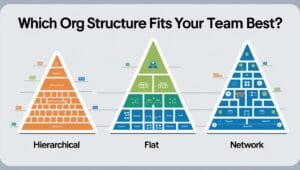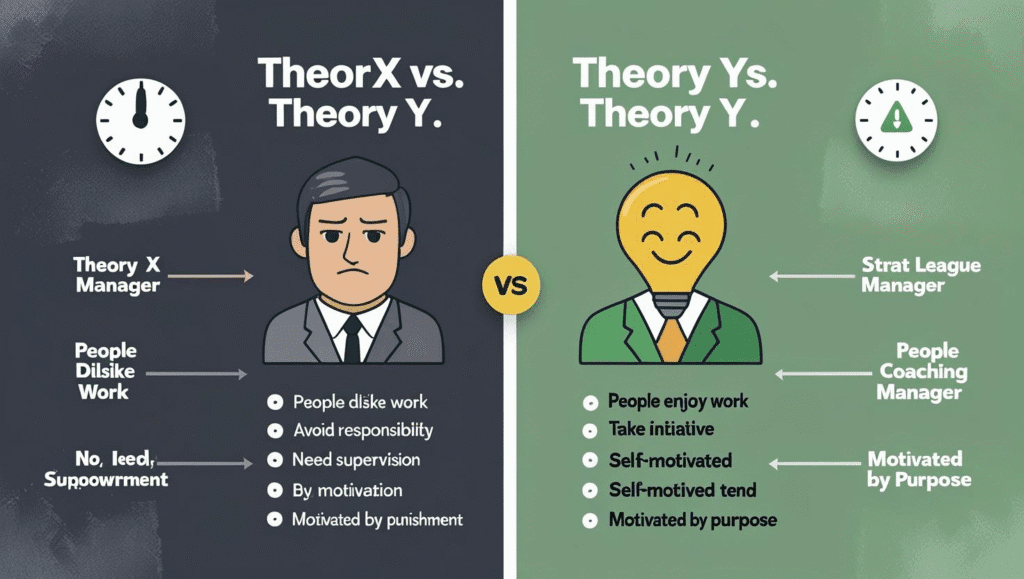Understanding Organizational Structures: A Comprehensive Guide
Just as a building requires a blueprint to stand strong and function effectively, any group of people working towards a shared goal needs a framework to guide their efforts. In the world of business and management, this framework is built upon the core concepts of “organization” and “organizational structure.” While they sound similar, they represent different but deeply interconnected ideas.
This expert guide will define these fundamental terms, clarify the key differences, explore the most common types of organizational structures used by businesses today, and explain related concepts like the organogram. By the end, you’ll have a clear understanding of the invisible architecture that powers businesses, from small startups to global corporations.
Defining the Core Concepts: Organization vs. Structure
To understand the whole, we must first understand the parts. Let’s break down the two key terms.
What is an Organization?
An **organization** is a social entity comprised of people who work together and coordinate their actions to achieve a common purpose or a set of collective goals. An organization is the entity itself—the complete system of people, resources, and objectives.
Examples are all around us: a local garments factory in Dhaka, a multinational technology company like Google, a non-profit charity, a school, or a government ministry. All of these are organizations because they involve people working within a system to achieve a specific mission.
What is an Organizational Structure?
The **organizational structure** is the formal framework or “blueprint” within an organization that defines how tasks are divided, roles are defined, and how the different parts of the organization fit together. It dictates the lines of authority, communication channels, and decision-making processes. In essence, it’s the skeleton that gives the organization its shape and allows it to function.
The Key Difference
The easiest analogy is this: The **organization** is the entire building. The **organizational structure** is the architectural blueprint. The blueprint shows the layout of the rooms (departments), the supporting pillars (management), and the hallways (communication channels). An organization cannot function without a structure, and a structure has no purpose without an organization to apply it to.
The Organogram: Visualizing the Structure
An **organogram**, more commonly known as an **organizational chart**, is simply a visual diagram that represents the organizational structure. It’s a map that clearly illustrates:
- The Chain of Command: Who reports to whom.
- Departments and Divisions: How the organization is grouped into functional areas.
- Span of Control: How many employees each manager is responsible for.
- Formal Communication Lines: The official paths for communication up and down the hierarchy.
Common Types of Organizational Structures
There is no single “best” structure. The optimal choice depends on an organization’s size, goals, and industry. Here are four of the most common types.
1. The Functional Structure (Hierarchical)
This is the most traditional structure, where the organization is divided into departments based on specialized functions, such as Marketing, Finance, Human Resources, and Production. It features a clear, top-down chain of command.
- Pros: Fosters deep expertise within departments, offers clear career paths for employees.
- Cons: Can lead to “silos,” where departments communicate poorly with each other, making the organization slow to adapt to change.
- Best for: Large, established companies with standardized processes, like a major manufacturing plant.
2. The Divisional Structure
In this model, the organization is structured around separate, semi-autonomous divisions. These divisions can be based on specific products, markets (e.g., consumer vs. enterprise), or geographical regions (e.g., Asia-Pacific Division, European Division). Each division often operates like its own mini-company.
- Pros: Highly responsive to specific market needs, clear accountability for each division’s performance.
- Cons: Can lead to a costly duplication of resources (e.g., each division has its own marketing team).
- Best for: Large multinational corporations with diverse and unrelated product lines.
3. The Matrix Structure
A matrix structure is a hybrid that combines two types of structures, usually functional and project-based. Employees have dual reporting relationships, reporting to both a functional manager (e.g., Head of Software Engineering) and a project manager (e.g., “New App” Project Lead).
- Pros: Allows for the flexible sharing of skilled resources across complex projects, encourages collaboration.
- Cons: The “two bosses” system can create confusion and power struggles if not managed carefully.
- Best for: Project-driven industries like consulting, aerospace, and IT development.
4. The Flat Structure (Horizontal)
Also known as a horizontal structure, this model has very few (or no) layers of middle management between employees and top executives. The goal is to promote direct communication, high levels of employee involvement, and rapid decision-making.
- Pros: Fosters a culture of responsibility and innovation, extremely fast communication.
- Cons: Can become chaotic as the company grows, and a lack of direct supervision can be challenging for some employees.
- Best for: Startups and small, innovative companies, such as those found in Dhaka’s growing tech scene.
Conclusion: Structure Follows Strategy
Understanding these concepts is crucial for anyone in a leadership or management role. The organization is the living entity, the structure is its skeleton, and the organogram is the x-ray that allows us to see it. There is no one-size-fits-all solution; the most effective organizations are those that design a structure that perfectly aligns with their strategic goals. As businesses grow and markets change, particularly in dynamic economies, their organizational structures must also evolve to ensure continued efficiency, clear communication, and success.


